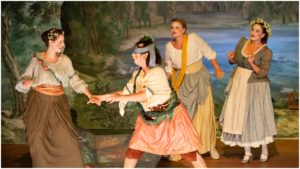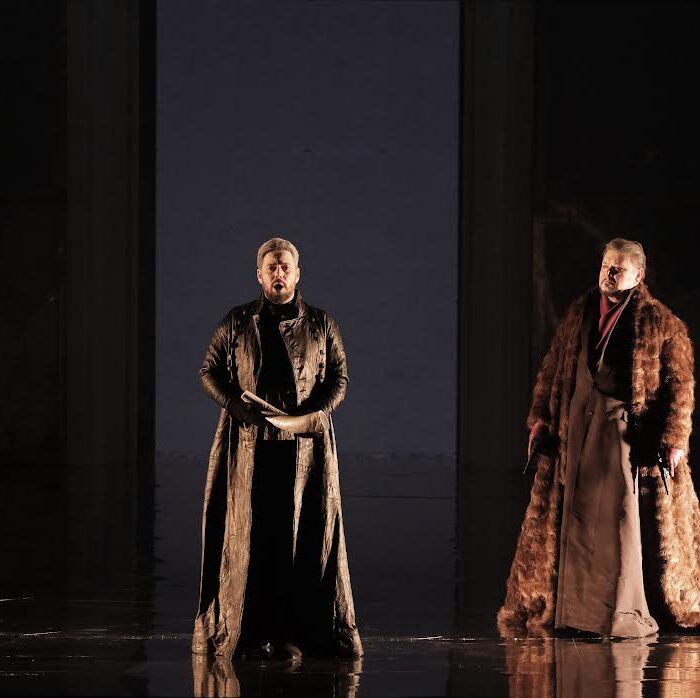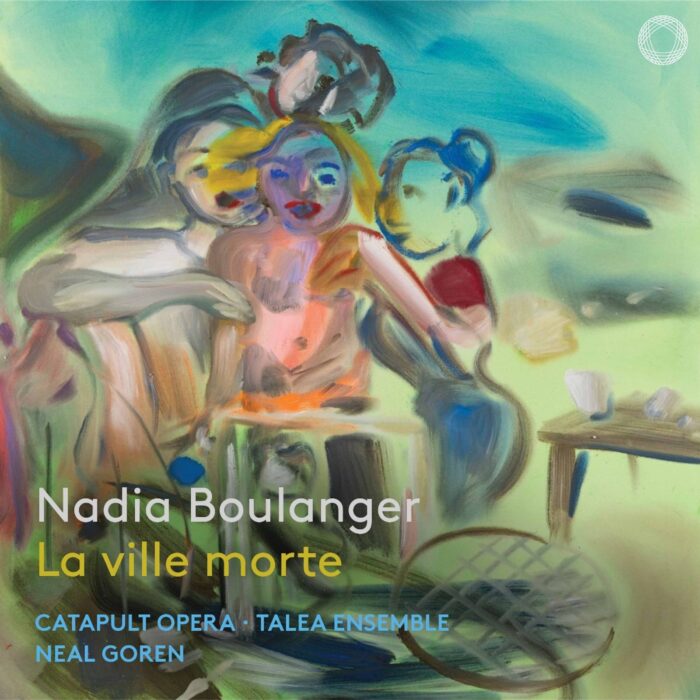
Innsbruck Early Music Festival 2021 Review: Pastorelle en Musique
Dorothee Oberlinger Conjures A Musical Idyl
By Alan Neilson(Photo: Birgit Gufler)
Following on from the previous evening’s heavy and unremittingly dark production of Mattheson’s “Boris Goudenow,” the Innsbruck Early Music Festival continued with a fresh, vibrant, and colorful performance of Telemann’s one-act serenata “Pastorelle en Musique,” written between 1713 – 1716, based on Mollière’s “Les Amants magnifiques.” As with “Boris Goudenow” the work was lost and has only recently been rediscovered, with its first modern performance taking place at Berlin’s Komische Oper in 2004.
As with most serenatas, “Pastorelle en musique” was written as a private commission, and not meant for public performance. Although it is not known for whom Telemann wrote the work, it is thought to have been commissioned to celebrate a wedding in Frankfurt. Certainly, the subject matter of love and fidelity, set in Arcadia would support this hypothesis.
Lasting approximately 105 minutes the work is designed as light entertainment, with plenty of beautiful, easily accessible musical numbers for soloists, chorus, and orchestra, and marries French, Italian, and German musical and theatrical traditions, with the libretto alternating between French and German. The plot is simple, in which two shepherds, Damon and Amyntas, woo two shepherdesses, Caliste and Iris, who, intent on maintaining their freedom, put up resistance. There is no suggestion of easy love, typical of a pastoral idyl, after all, the work is celebrating marriage and lifelong commitment. Then there is Knirfix, an unsophisticated know-it-all, for whom love is a bridge he cannot cross. He communicates his ironic observations about the couples directly to the audience, which turns him into a sympathetic, even amusing character. The work ends with two couples happily united and Knirfix advising them to learn a nursery rhyme.
A Historically Informed Performance
The direction was put into the hands of Nils Niemann, aided by Johannes Ritter who designed the costumes and stage décor. They opted for a historically informed performance, albeit not rigidly so. Having a violinist from the orchestra coming onto the stage to dance and play a menuet was an excellent and wonderfully executed idea, but would have been very unlikely in the 18th century.
The cast were costumed in colorful, idealized 18th century shepherd and shepherdess attire, with wigs and heavy makeup including red rosy cheeks, all of which is consistent with our ideas of Arcadia. The set consisted of little more than flats painted with Arcadian vistas, to which little was added. The effect was to put in mind the pastoral paintings of Watteau.
The acting was stylized so that the singers when not singing would take up poses and place themselves to create a pleasing mise-en-scène, and even when directly involved their physical movements were fairly restrained, although with occasional exceptions, such as when Iris gave Amyntas a good hard slap across the face. All of which drew attention to Knirfix’s boisterous, inappropriate interventions, which were inconsistent with the lovers’ sparring.
Overall, it proved to be an elegant and delightful staging that sat easily on the eye.
Oberlinger’s Musical Idyl
The musical director was the virtuoso baroque recorder player Dorothee Oberlinger. She produced an energetic and rhythmically vibrant reading from Ensemble 1700, drawing out the beauty and celebratory nature of the work, in which the trumpets and horns added to the sumptuous sound and its textural interest. The dance-like rhythms were also nicely crafted to enhance the sense of a pastoral idyl, in which Oberlinger herself chimed in with bird song on the recorder. The work opens with an upbeat concerto in seven movements which immediately captured the attention with its engaging melodies, fresh, graceful sound, lively attack, and neatly accented and precise phrasing. She maintained an almost perfect balance within the ensemble throughout the evening, without ever dominating the singers, to whom she always showed correct consideration.
The Two Couples
The two couples were portrayed as two distinct types. Whilst Damon and Caliste were serious and thoughtful, Amyntas and Iris were younger, livelier, and adopted a more carefree attitude.
Baritone Florian Götz gave an understated, but charming presentation of Damon. He possesses a well-centered, agile voice, with a pleasing tone, and always appeared to be in full control, both vocally and emotionally, as the well-mannered suitor. His aria “Ich will sterner meine Seele” came closest to him openly disclosing his emotions. Most of his arias were sung in French, in which he proved himself adept.
The object of his affection, Caliste, was played by soprano Lydia Teuscher, who produced a moody and not wholly sympathetic portrait. She brought a high degree of expressivity to her singing in which sparkling coloratura and neatly crafted embellishments impressed. Her aria “Dir Ahmet was, beklemmtes Herze” was sensitively rendered, in which vocal agility and lyricism captured her inner pain.
The countertenor Alois Muhlbacher was a playful and likable Amyntas. He possesses a clear bright singing voice with a homogenous tone, which he used with confidence to portray the young shepherd. Singing arias in both German and French, he displayed considerable technical skill and vocal control in which he embellished the vocal line with pleasing ornamentations, short trills, and a high-lying coloratura. The one negative aspect being that his French pronunciation was not always very clear.
It was soprano Marie Lys in the role of Iris who proved to be the audience’s favorite, receiving strong applause at the final curtain. She produced a convincing portrait of the lively shepherdess, which was reflected in her vibrant singing. The aria “Soll ich lieben?” in which Iris displays her uncertainty on whether or not to accept love’s invitation caught the eye, in which Lys showed off her vocal versatility and expressivity, displaying her contrasting thoughts with changing intonation, and rising determination with pleasing ornamentations and light coloratura.
In scene two, Lys and Teuscher’s coloraturas combined with dazzling effect as they expressed their determination to remain free from love. Occasionally complementing and supporting each other, at other times creating colorful contrasts, the two coloraturas danced and sparred in an enthralling vocal display.
Knirfix Sits In Judgement
Tenor Virgil Hartinger made for an excellent Knirfix. He possesses a strong stage personality which allowed him to communicate easily with the audience, replete with knowing looks and winks. Scene five, in particular, showed off his ability to clearly define his character as he passes judgment on Iris and Caliste in a nicely molded expressive recitative, followed by the aria “Gar zu ekel sein im Freien” in which his engaging, agile voice was displayed to good effect.
The Vocal Consort Berlin, consisting of seven singers, played the roles of shepherds and shepherdesses and combined beautifully to create a pleasing display of ensemble singing. While the final air “Bergers fidelles,” sung in French, was delightfully delivered, it was the second scene that captured the attention in which, combining with Caliste and Iris, the Shepherdesses, this time singing in German, proclaim their desire to remain free from love. They were also fully engaged throughout the performance in shaping the attractive visual scenes.
This was the perfect antidote to the festival’s brutal, heavy and unattractive presentation of Mattheson’s “Boris Goudenow” in which so much was covered in darkness and obfuscation. By contrast, Telemann’s “Pastorelle en musique” was a delicate, breezy production, in which the staging was constructed to enhance the music and to give form to its very simple and charming narrative. The fact that all the musicians were of such high quality meant that the audience was able to relax and enjoy Telemann’s music in its full glory.
It was a production that demanded little, but offered much.



